Abstract
The results of examinations of stools for Bacillus cereus among three unrelated groups of individuals are presented. The groups consisted of (1) healthy school-children aged 6-11 years in a rural region of South Africa examined during each of the four seasons of the year; (2) 15 healthy volunteers comprising staff of a London microbiology laboratory and their families examined on each of 3 consecutive weeks; (3) 75 unrelated young children, 2 months to 5 years of age, in a second rural region of South Africa examined during a pilot study of 1 week's duration on the aetiology of rural gastroenteritis. The stools of the last group were submitted as being related to present or recent diarrhoea in the respective children. In group 1, B. cereus isolation rates ranged from 24.3% at the autumn visit to 43% at the summer visit with a significantly higher rate of isolation in the summer than at other seasons of the year (P less than 0.05). B. cereus was isolated from 40% of group 2 volunteers on week 1, none on week 2 and 20% on week 3. The organism was detected in the 12 positive specimens at levels of approximately 10(2)/g and constituted 2.5-30% of the total aerobic spore-forming bacillus population in the stools. In group 3, B. cereus was recovered from 18.7% of the stool samples and was isolated consecutively with other pathogens (enteropathogenic Escherichia coli and rotavirus) on only five occasions. In groups 1 and 3, less than 5% of the stools had '3+' levels of B. cereus (greater than 10 colonies per direct plate culture). B. cereus was readily isolated from all of 10 food samples, representative of the typical diet of the group 1 individuals, and was present in substantial numbers (10(4) to 5.5 X 10(6)/g) in half of them. The isolation results, supported by serotyping, indicated that carriage of B. cereus in stools is transient and its presence at any one time reflects solely its intake with foods.
Full text
PDF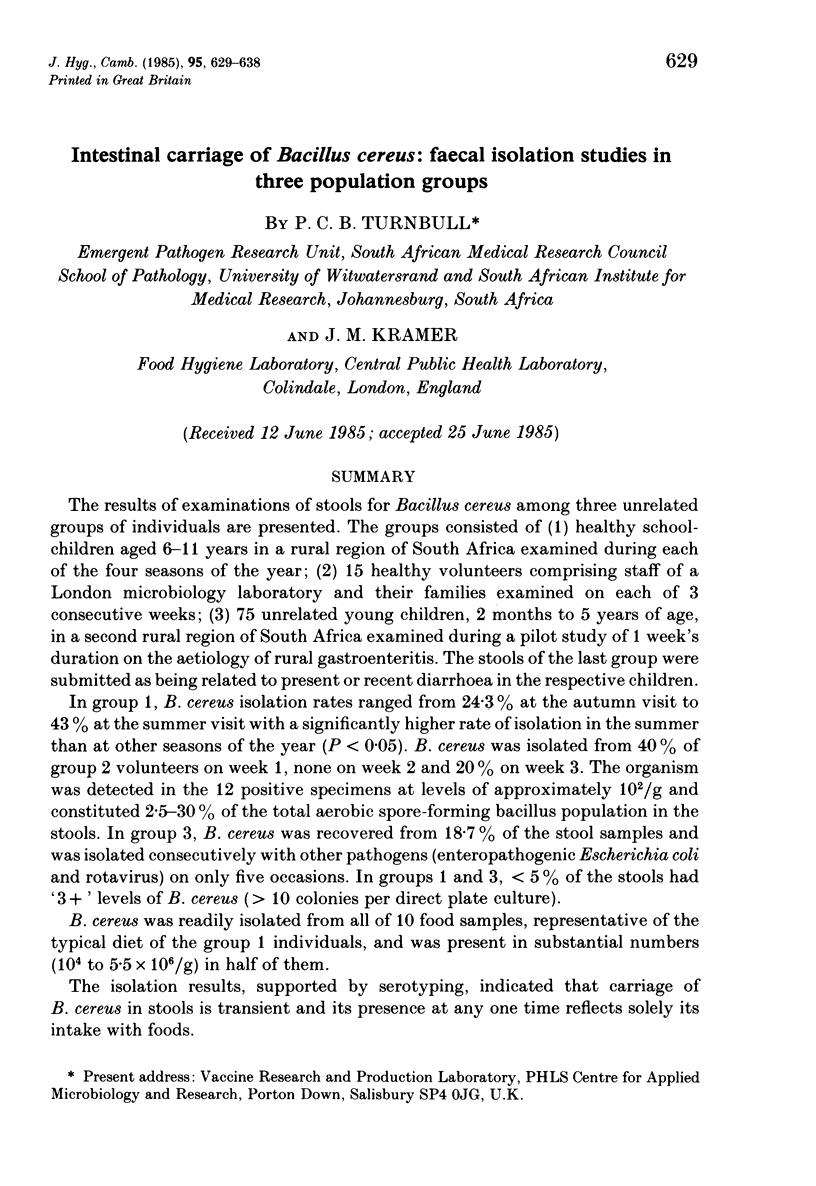
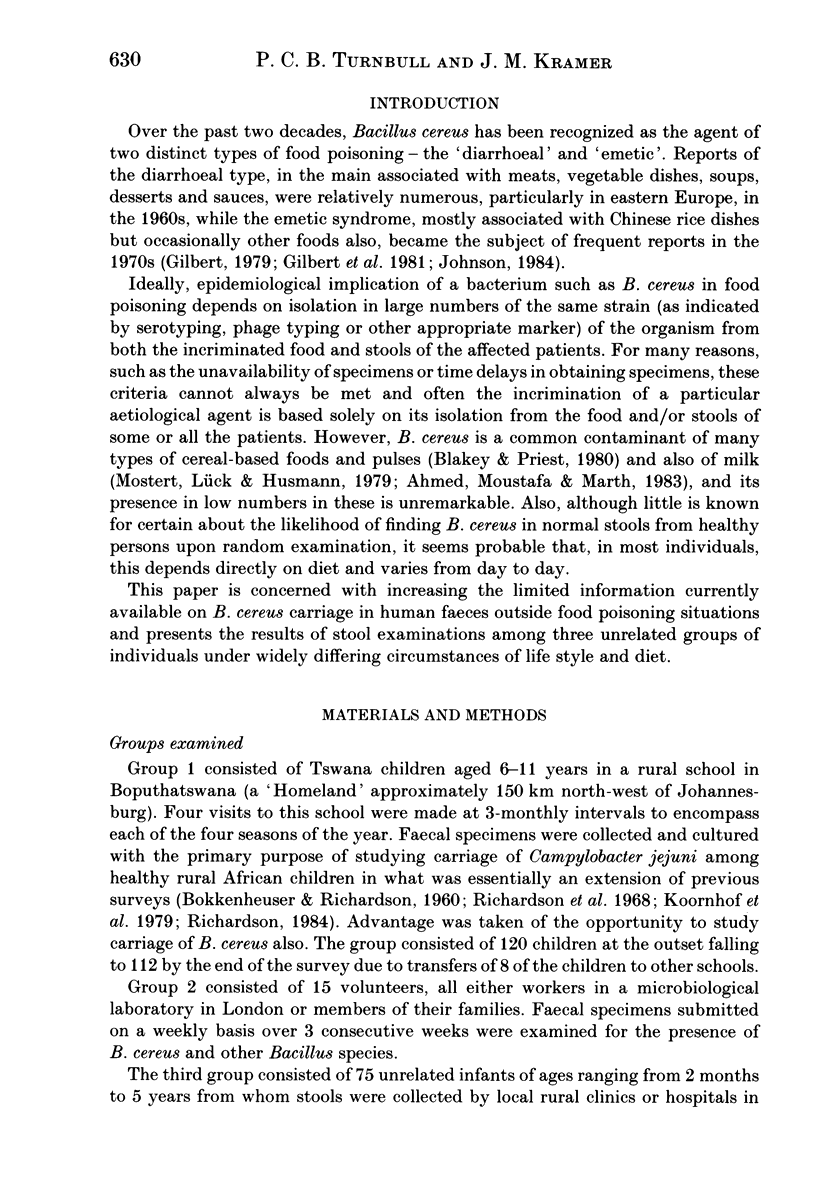
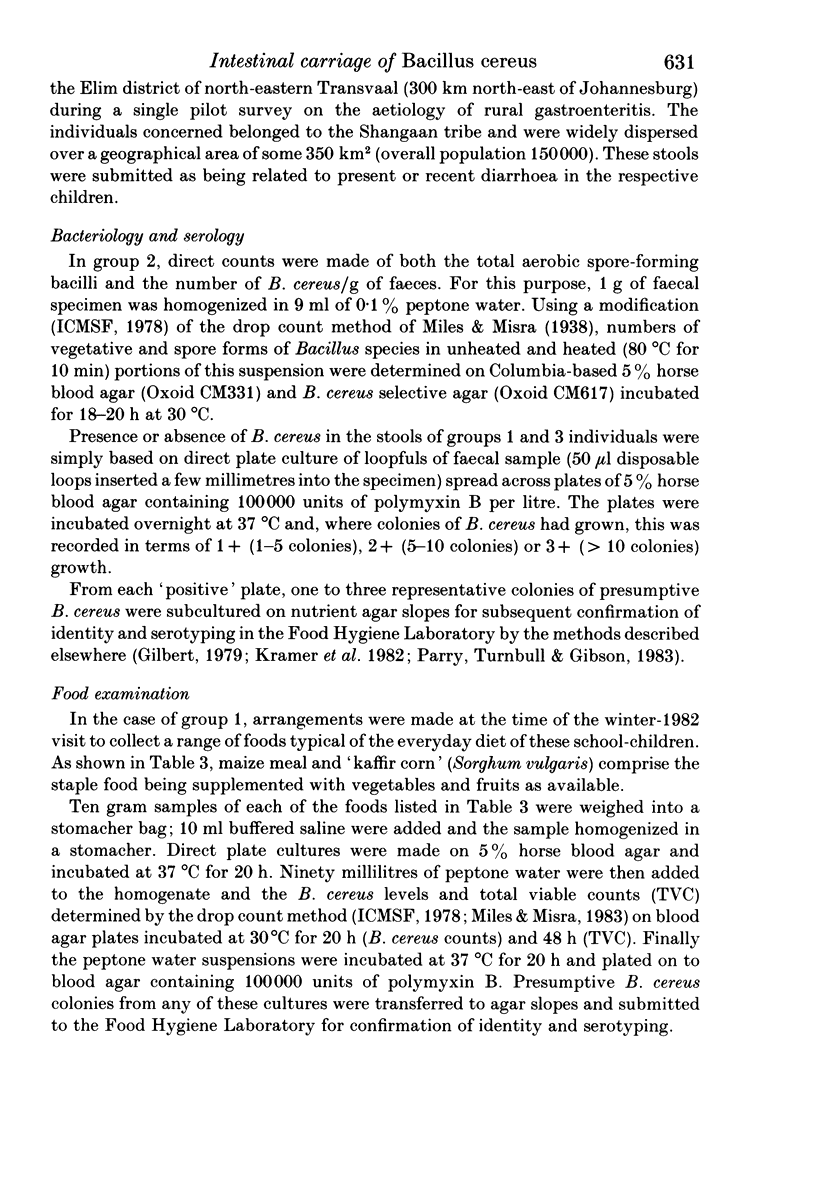
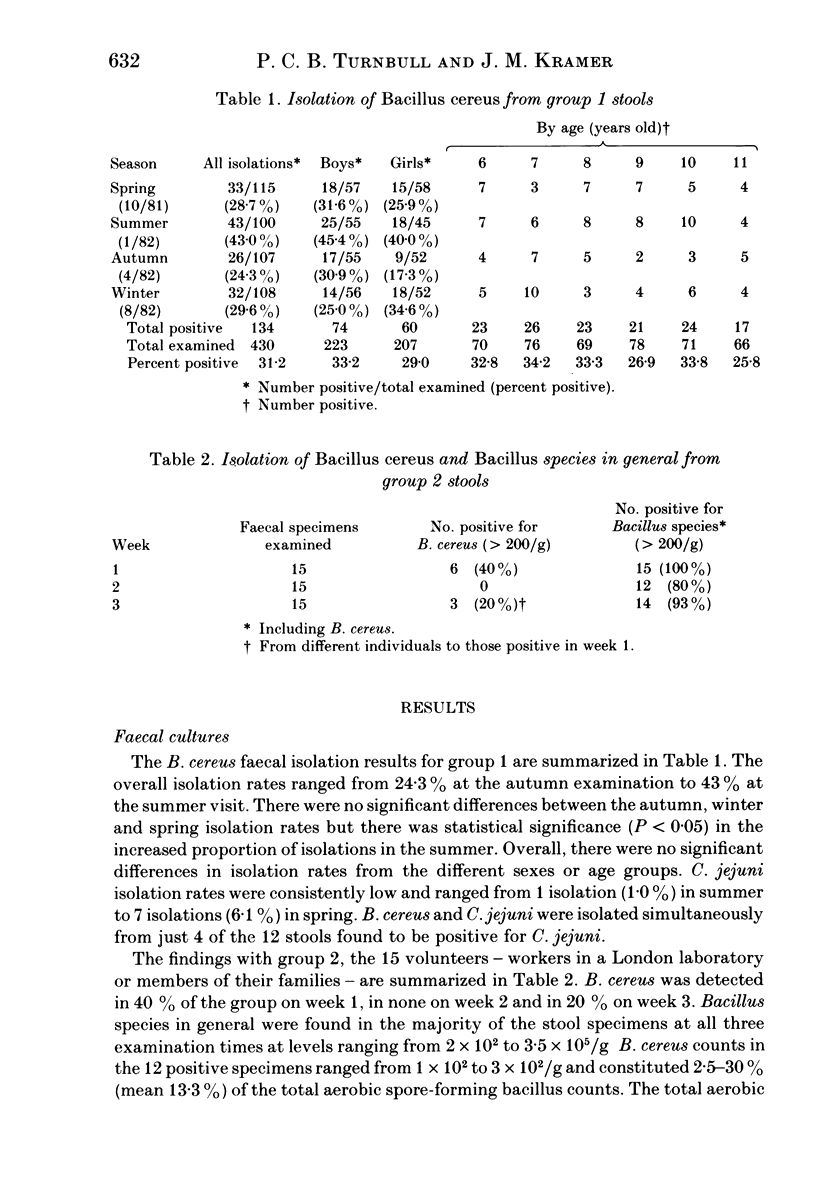
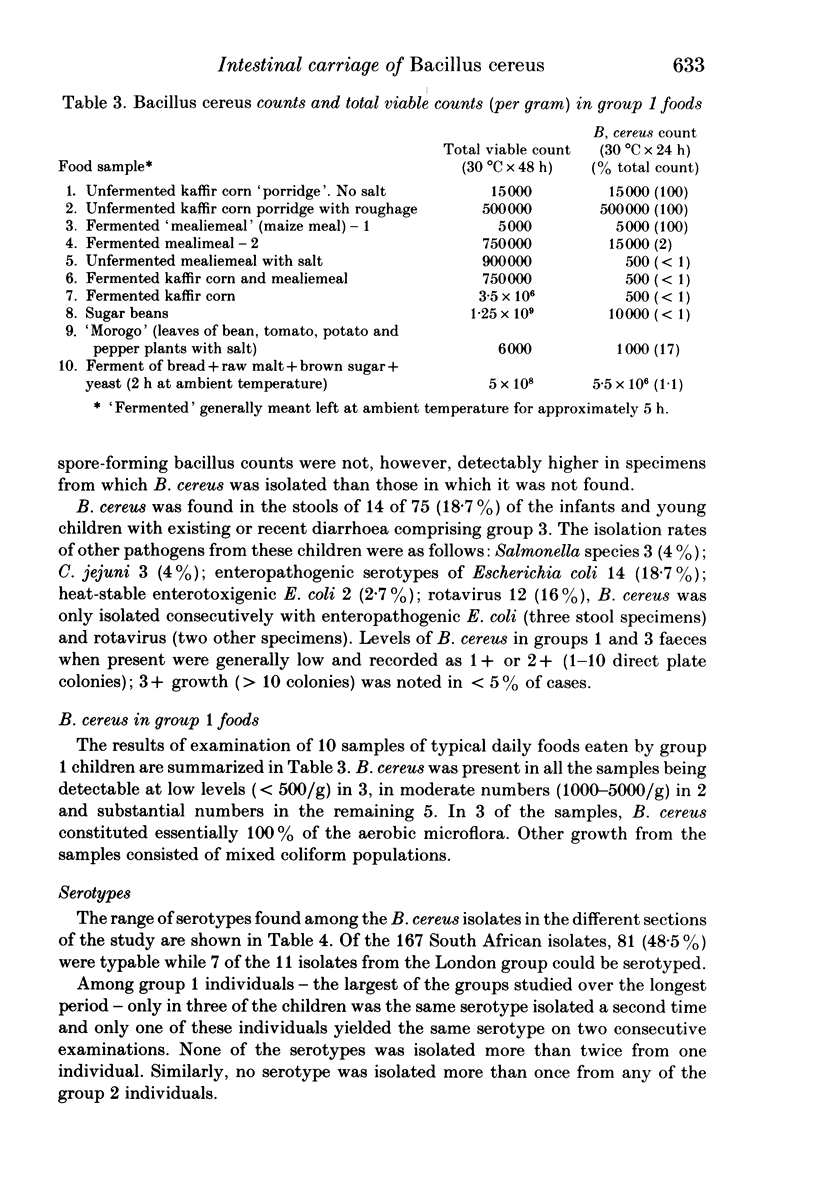
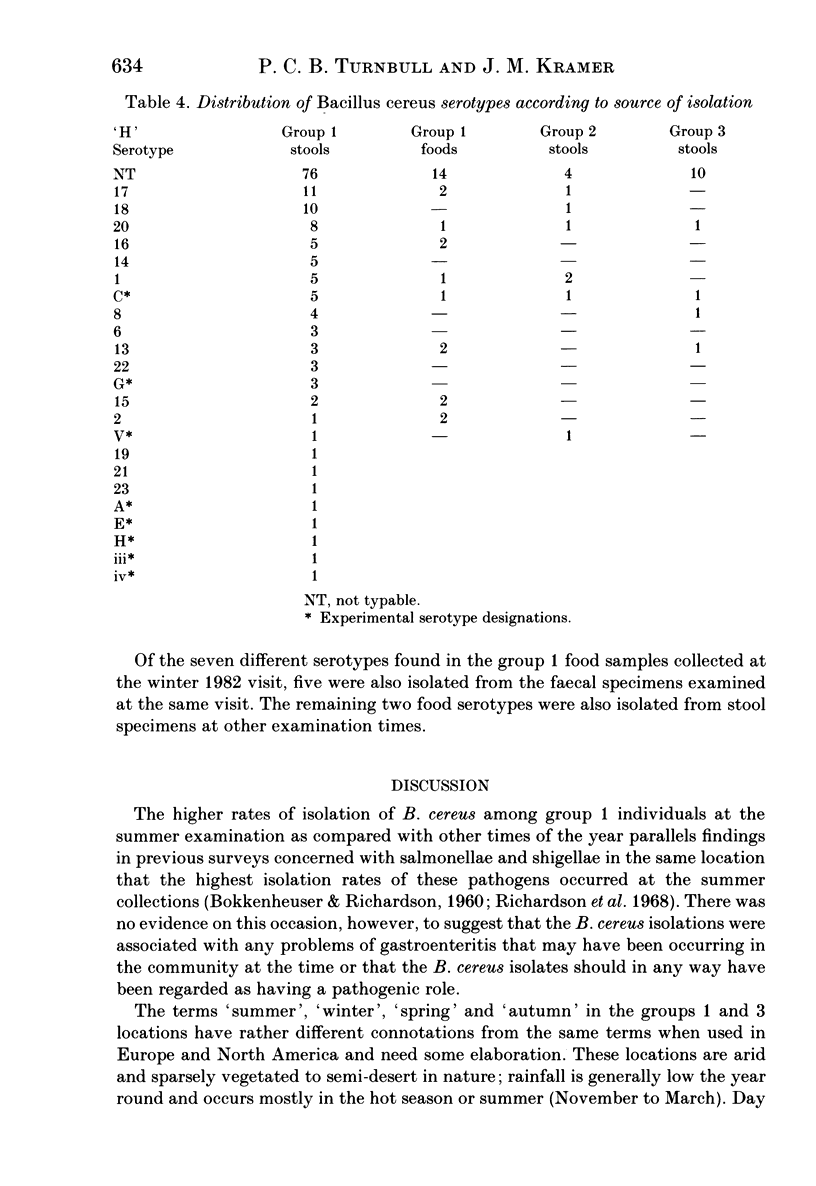
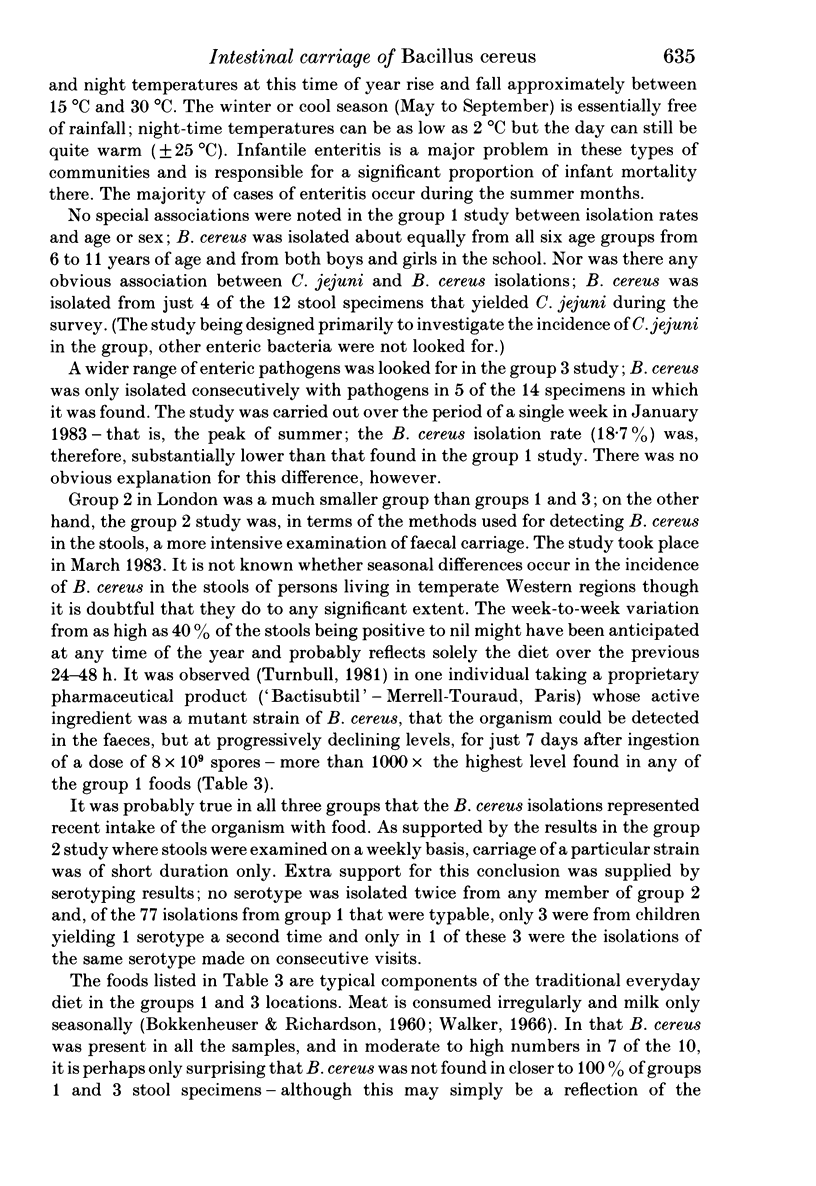
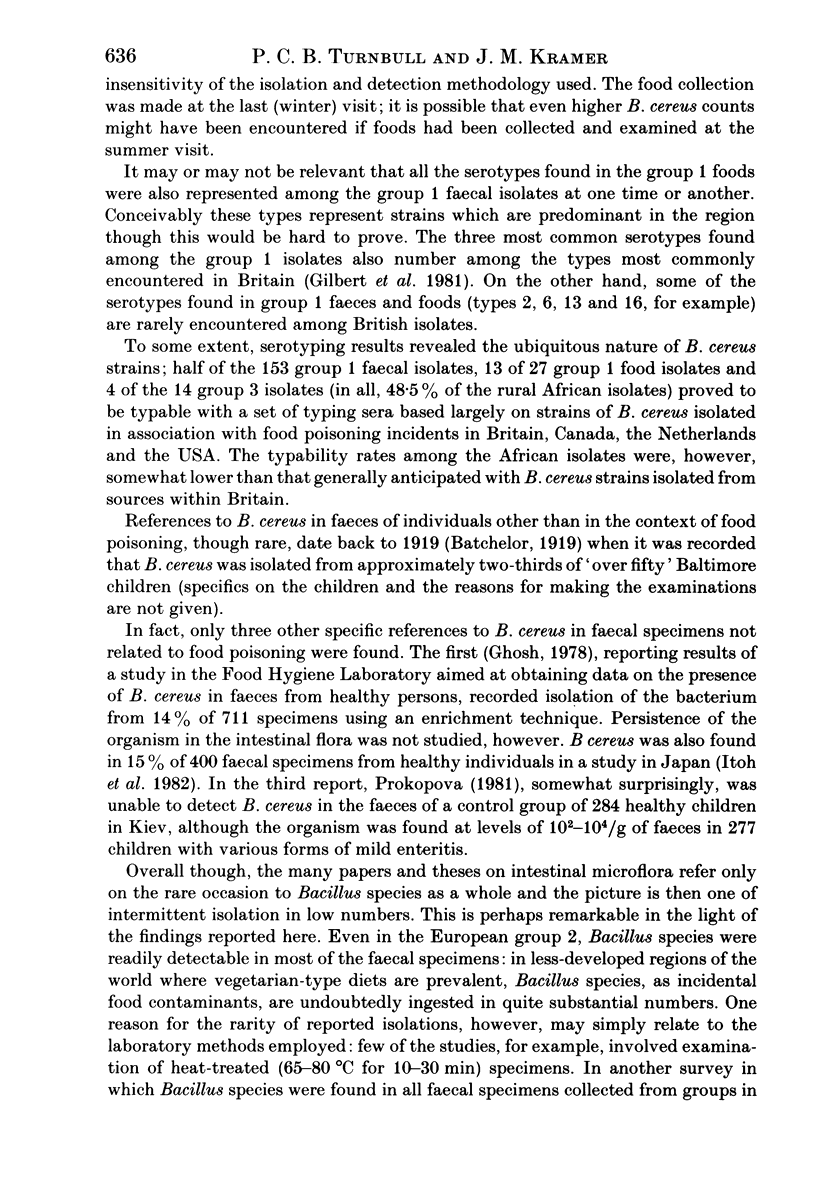
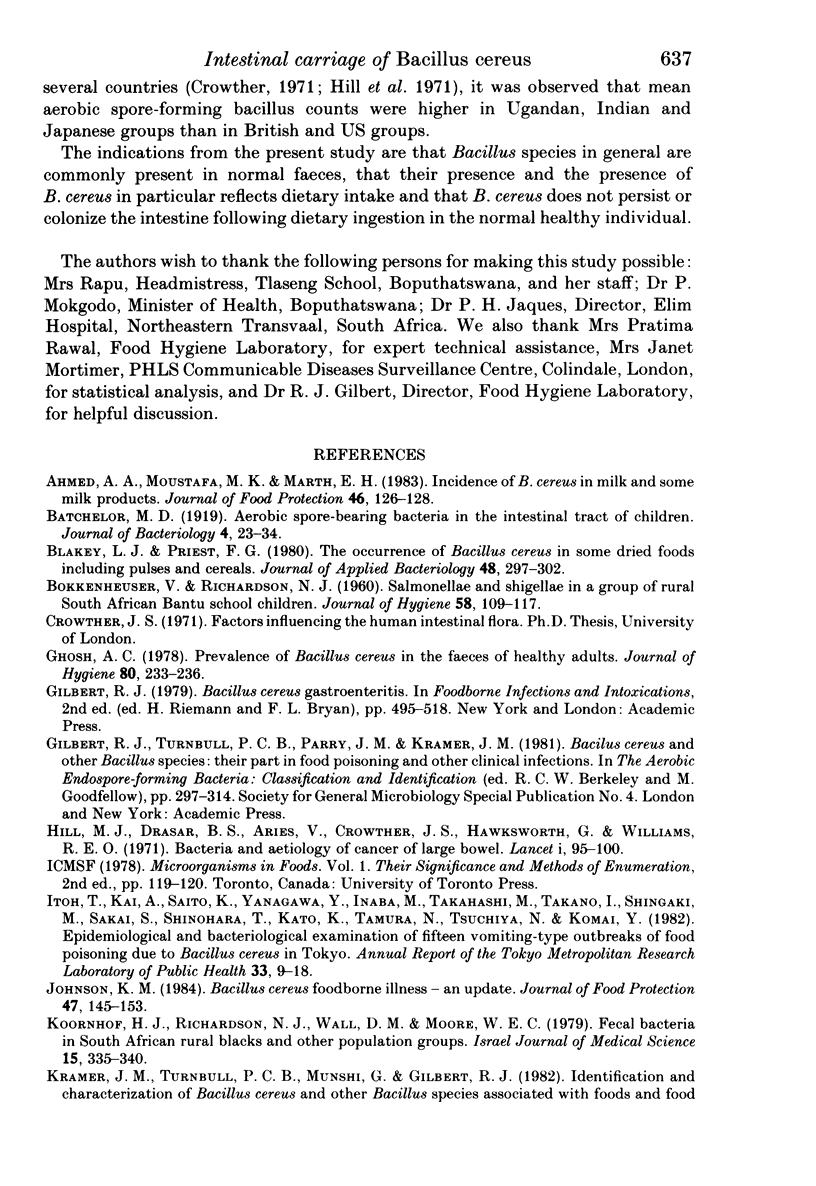
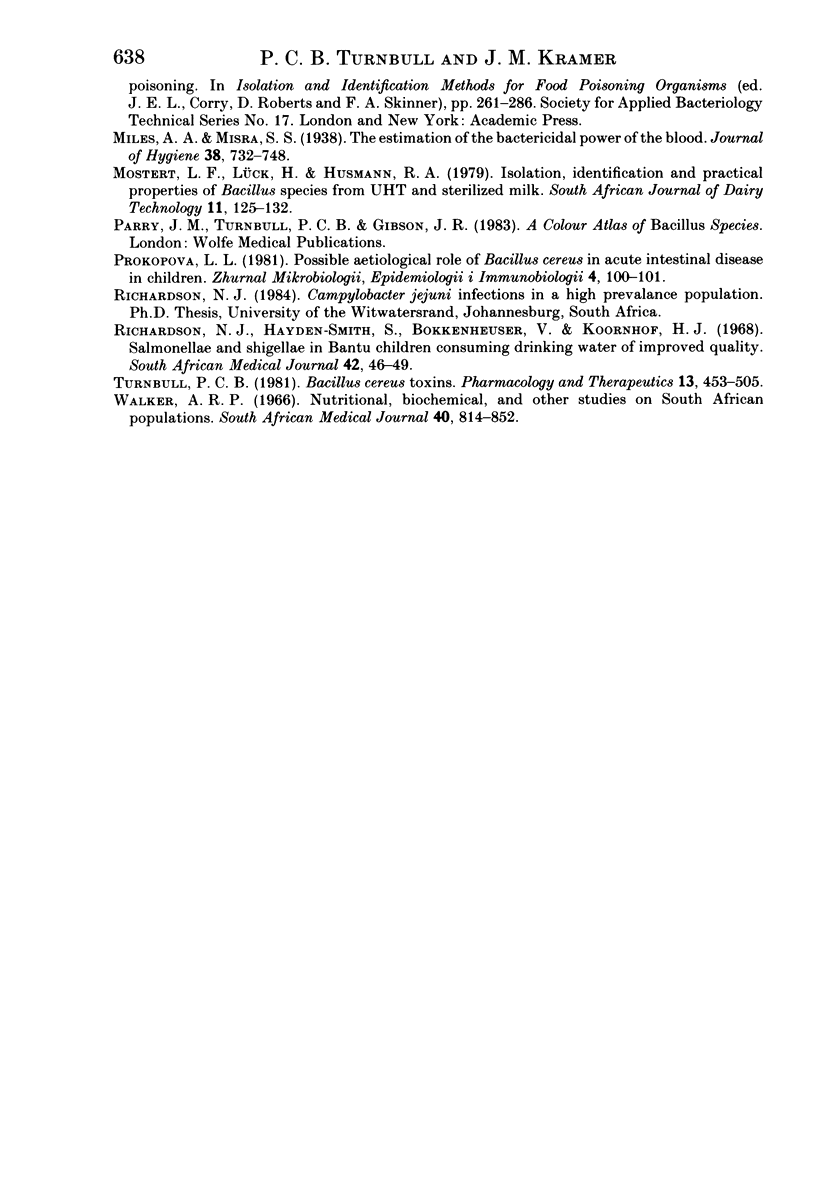
Selected References
These references are in PubMed. This may not be the complete list of references from this article.
- BOKKENHEUSER V., RICHARDSON N. J. Salmonellae and shigellae in a group of rural South African Bantu school children. J Hyg (Lond) 1960 Mar;58:109–117. doi: 10.1017/s002217240003816x. [DOI] [PMC free article] [PubMed] [Google Scholar]
- Batchelor M. D. Aerobic Spore-Bearing Bacteria in the Intestinal Tract of Children. J Bacteriol. 1919 Jan;4(1):23–34.15. doi: 10.1128/jb.4.1.23-34.15.1919. [DOI] [PMC free article] [PubMed] [Google Scholar]
- Blakey L. J., Priest F. G. The occurrence of Bacillus cereus in some dried foods including pulses and cereals. J Appl Bacteriol. 1980 Apr;48(2):297–302. doi: 10.1111/j.1365-2672.1980.tb01229.x. [DOI] [PubMed] [Google Scholar]
- Ghosh A. C. Prevalence of Bacillus cereus in the faeces of healthy adults. J Hyg (Lond) 1978 Apr;80(2):233–236. doi: 10.1017/s0022172400053572. [DOI] [PMC free article] [PubMed] [Google Scholar]
- Hill M. J., Drasar B. S., Hawksworth G., Aries V., Crowther J. S., Williams R. E. Bacteria and aetiology of cancer of large bowel. Lancet. 1971 Jan 16;1(7690):95–100. doi: 10.1016/s0140-6736(71)90837-3. [DOI] [PubMed] [Google Scholar]
- Koornhof H. J., Richardson N. J., Wall D. M., Moore W. E. Fecal bacteria in South African rural blacks and other population groups. Isr J Med Sci. 1979 Apr;15(4):335–340. [PubMed] [Google Scholar]
- Prokopova L. L. O vozmozhnoi étiologicheskoi roli Bacillus cereus pri ostrykh kishechnykh zabolevaniiakh u detei. Zh Mikrobiol Epidemiol Immunobiol. 1981 Apr;(4):100–101. [PubMed] [Google Scholar]
- Richardson N. J., Hayden-Smith S., Bokkenheuser V., Koornhof H. J. Salmonellae and Shigellae in Bantu children consuming drinking water of improved quality. S Afr Med J. 1968 Jan 20;42(3):46–49. [PubMed] [Google Scholar]
- Turnbull P. C. Bacillus cereus toxins. Pharmacol Ther. 1981;13(3):453–505. doi: 10.1016/0163-7258(81)90026-7. [DOI] [PubMed] [Google Scholar]
- Walker A. R. Nutritional, biochemical, and other studies on South African populations. S Afr Med J. 1966 Sep 17;40(34):814–852. [PubMed] [Google Scholar]


